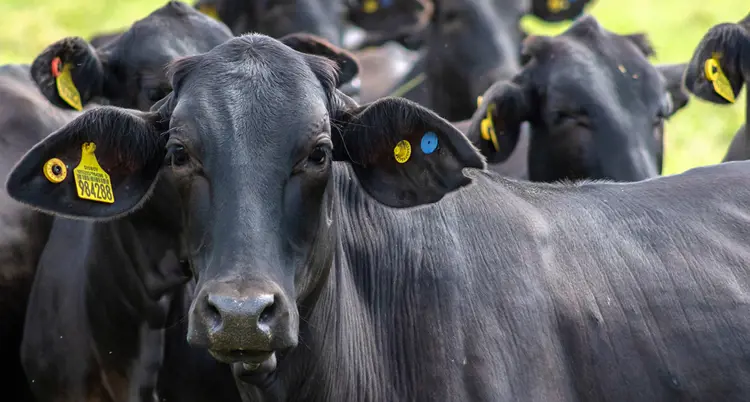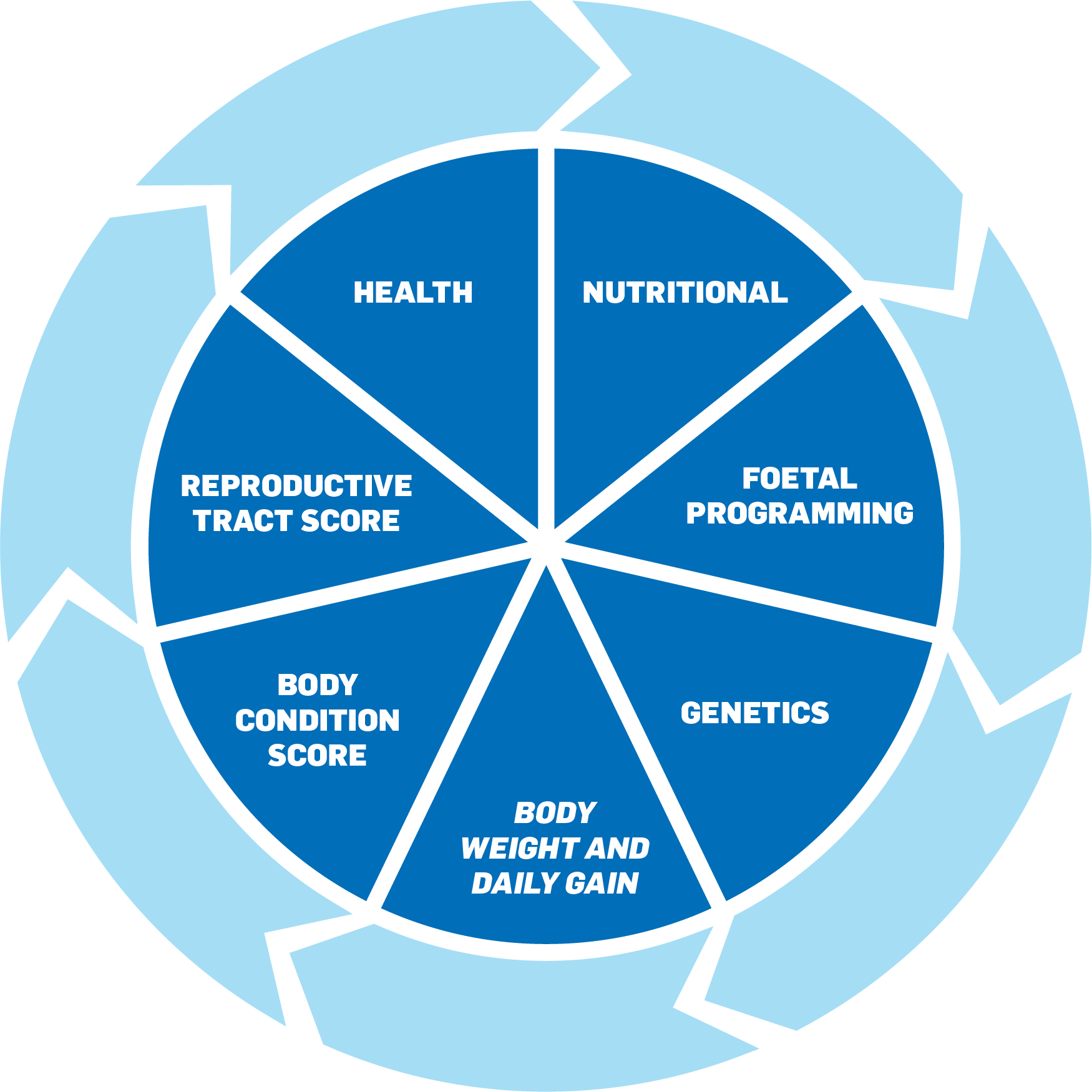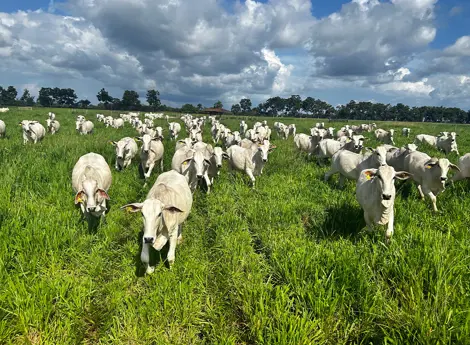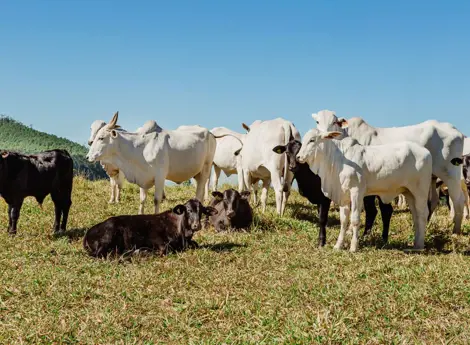How better heifer development produces the best cows
Decreasing heifer age at first calving is an important management strategy to increase the economic and biological efficiency of your cow-calf production system. Pre- and post-weaning weight gain influences heifer live weight and body condition scores at the beginning of the season, which are positively correlated with higher pregnancy rates at season end. By tailoring your nutritional strategy to the breed, season, and heifer phases, you can optimise weight gain and pregnancy rates.

Heifer development
Worldwide, the average pregnancy rate in the cow-calf production system is quite low – between 60-70%. Average age at first conception is relatively high, ranging between 24 and 36 months depending on the feed management system used.
In extensive beef cattle systems, these issues are most often caused by a lack of nutrients resulting from incorrect grass and compound feed management. Less compound feed and poor grass management leads to lower daily gain, higher age at first conception, and fewer calves per productive life.
Nutritional factors
Several factors, including nutrition, influence age at puberty and pregnancy rate (see Figure).

Increased nutrient intake, especially energy and protein, improves daily weight gain, body condition score, and pregnancy rates, while reducing age at puberty. Higher energy intake is related to higher luteinising hormone (LH) and insulin-like growth factor 1 (IGF-I). Puberty is dependent on the maturation of the hypothalamus, which in turn depends on increased pulsatile LH secretion. Dietary energy restriction can therefore delay puberty by inhibiting the development of the reproductive endocrine system.
Lipids are used as a nutritional strategy due to their higher energy density and their ‘nutraceutical’ influence on reproductive functions. Tallow, fish meal, oilseeds, and vegetable oil provide fatty acids such as linoleic acid, oleic acid, and omega-3. These fatty acids may improve the mechanism of embryo preservation by reducing prostaglandin secretion, thereby increasing the life of the corpus luteum and consequently the conception rate. Lipid supplementation also increases cholesterol and progesterone circulation, preparing the uterus for implantation and helping to maintain pregnancy. Increased levels of these two substances are associated with improved conception rates in lactating cattle.
Forages are generally low or imbalanced in minerals essential to optimal animal performance, health, and reproductive performance. Subclinical mineral deficiencies also affect immunity and milk production. In beef herds, this can mean a reduction in the number of calves born and weaned, and a decrease in calf weight at weaning.
Well-balanced mineral supplementation is therefore key to improving performance, health, and fertility on the farm.
Improve average daily gain and pregnancy rate with the Kaliber Beef Plan
Unlike other nutritional programmes, De Heus’ Kaliber Beef Plan meets your heifer’s precise requirements all the way through to calving – and improves profitability through increased heifer fertility and number of calves per year.
Optimise your heifers' performance
Isn’t it time you had a nutritional programme that was tailored to your specific needs? Learn how the KaliberBeef Plan can support your beef herd today.
Discover the KaliberBeef PlanAbout the author

Fabiano Alvim Barbosa
Product Developer Ruminants
Interested how to improve your farm results? Please, feel free to get in touch with me.


